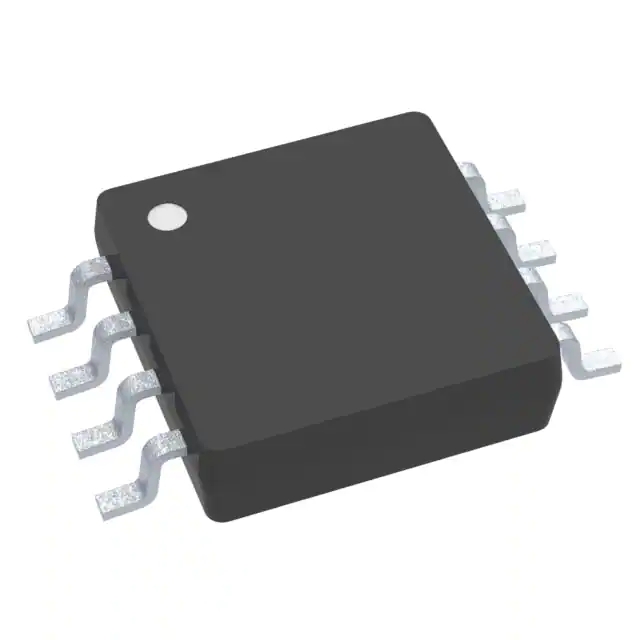
The TMP411 device is a remote temperature sensor monitor with a built-in local temperature sensor, available in VSSOP-8 and SOIC-8 packages. Remote temperature sensors, diode-connected transistors are typically low-cost NPN or pnp type transistors or diodes that are part of microcontrollers, microprocessors or FPGas.
Pin Configuration

The remote accuracy is ±1°C and is suitable for multiple equipment manufacturers without calibration. The dual-wire serial interface accepts SMBus write byte, read byte, send byte, and receive byte commands to program alarm thresholds and read temperature data.
Features included in the TMP411 device include: series resistance cancellation, programmable non-ideal factors, programmable resolution, programmable threshold limits, user-defined offset registers for maximum accuracy, minimum and maximum temperature monitors, wide remote temperature measurement ranges (up to 150°C), diode fault detection, and temperature alert capabilities.
TMP411 Simplified block diagram

TMP411 Functional Block Diagram

Overview
The TMP411 is a dual-channel digital temperature sensor that incorporates a local mode temperature measurement channel in a single VSSOP-8 or SOIC-8 package. The TMP411 is dual-wire and SMBus interface compatible, and the specified temperature range is -40°C to +125°C.
The TMP411 device contains registers that hold configuration information, temperature measurements, temperature comparator maximum and minimum limits, and status information. User programmed high and low temperature limits stored in TMP411 trigger an overtemperature or overtemperature ALERT for local and remote temperatures. Additional heat limits can be programmed into TMP411 and can trigger another flag (THERM) that initiates the system's response to rising temperatures.
The TMP411 requires only a transistor to be connected between D+ and D - for appropriate remote temperature sensing operation. SCL and SDA interface pins require pull-up resistors as part of the communication bus, while ALERT and THERM pins are open leakage outputs and require pull-up resistors. ALERT and THERM pins can be shared with other devices to wire or implement if needed. TI recommends the use of 0.1-μF power supply bypass capacitors for good local bypass. The following figure shows the typical configuration of the TMP411.
